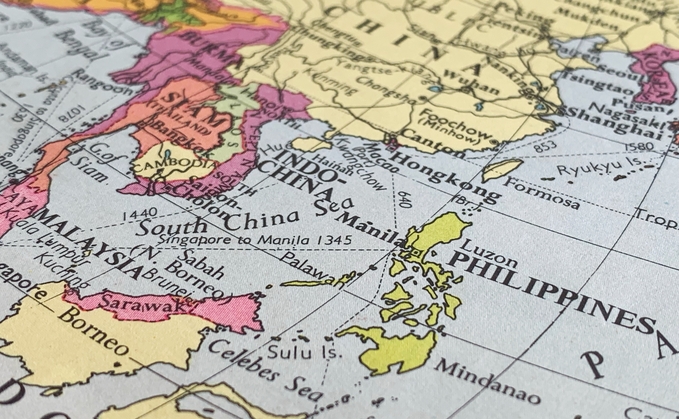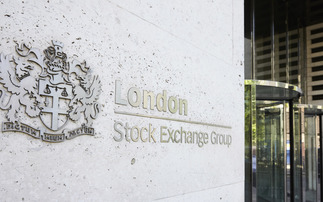
Investor interest in Indo-Pacific defence stocks is growing. The region faces mounting security challenges – from China's assertiveness in the South and East China Seas, to the future status of Taiwan, and nuclear risks on the Korean Peninsula.
At the same time, the United States has pressed its regional allies and partners to contribute more to their own defence. The Indo-Pacific region is shaping up to be one of the most geopolitically volatile regions of the world and is at the foothills of a major rearmament drive.
But the key question for investors is: how much more will these countries actually spend?
To answer this, we can divide the region into two categories:
- Mature economies (Japan, South Korea, Australia, Taiwan, Singapore), where defence spending is best assessed against GDP-share targets, just as in Europe.
- Fast-growth economies (India, Indonesia, Philippines), where projecting defence spending as a rising share of GDP can give a distorted picture. GDP growth is likely to rise faster than defence budgets. However, absolute defence budgets will expand significantly even if the % of GDP remains unchanged.
We are entering an era where energy policy, national security, and investment flows are converging around nuclear power. Trump's executive orders are not just political theatre but part of a broader, global policy shift that will potentially provide a strong tailwind for uranium and uranium miners.
Below we show our projections for the mature economies. These assume:
- Baseline 2024 spend from SIPRI data.[1]
- 2% nominal GDP growth per year through 2030.
- Defence spending rising to 3% of GDP by 2030, with a linear ramp up from today's share.
- We present both the incremental increase in defence spending in 2030 versus today, and the cumulative extra spend from 2025–2030 compared with holding budgets flat at 2024 levels.
Source: SIPRI Military Expenditure Database (2024 figures). Projections by HANetf. Assumptions: 2% annual nominal GDP growth; linear increase in defence spending to 3% of GDP by 2030; all figures in 2023 constant US dollars.
Japan dominates the picture. If Tokyo were to lift its defence burden to 3% of GDP by 2030, it would spend roughly $265bn more over the period. Australia, too, would face a heavy lift, with nearly $90bn in additional outlays required. It should also be noted that we have only assumed a 3% target but there are already calls from the US for Canberra to move to 3.5%.
Taiwan's climb to 3% would entail around $34bn extra, a sizeable sum relative to its smaller economy, while South Korea's increase looks modest, at about $49bn, reflecting its already elevated starting point of nearly 2.6% of GDP. Singapore, meanwhile, already spends above 3% today, underlining just how conservative our 3% assumption really is. For investors, the point is clear: Indo-Pacific defence budgets have the potential to expand by transformative amounts.
Fast-growth economies
For India, Indonesia, and the Philippines, we use a different approach. Unlike the mature Indo-Pacific powers, these are fast-growing economies where, where GDP growth is likely to outstrip defence spending growth, even if the latter is rising substantially.
To capture this dynamic, our projections assume:
- Baseline 2024 spend from SIPRI data.
- 6% annual nominal GDP growth to 2030 – a conservative assumption, as recent nominal growth has often been higher.
- Defence spending held constant as a share of GDP at current levels. Matching current percent of GDP spent on defence spending still results in a materially large increase in budgets in fast growing economies.
- Results shown as both the percentage increase in annual defence spend in 2030 versus 2024, and the cumulative additional spending from 2025–2030 compared with holding budgets flat at 2024 levels.
India stands out above all. Even if Delhi simply holds defence spending at its current share of GDP, by 2030 its annual budget would be over $120bn, an increase of $36bn a year compared with today, and amounting to more than $120bn in cumulative extra spending across the period.
Indonesia, despite starting from a much lower base, would still see its defence budget rise by nearly $5bn a year by 2030, adding some $15bn cumulatively. The Philippines, likewise, would increase annual spending by almost $3bn and accumulate an additional $9bn over the period.
An extra $600bn based on conservative assumptions
By 2030, our sample of Indo-Pacific states alone points to almost $600bn in additional defence spending – over $448bn from the mature economies and almost $144bn from the fast growers. Vietnam, a key South China Sea player, is not even included. And with conservative assumptions underpinning our projections, the real increase could be higher.
This growth is defence spending implies a predictable pipeline of sizeable contracts that will increasingly flow to regional suppliers, not just U.S. primes. Japan and South Korea are already emerging as key exporters while India is pushing for greater self-sufficiency in procurement. In short, the numbers point to a potential re-rating of local defence stocks as investors price in a larger, more reliable market for the region's defence industry.
Methodology: worked examples
Our projections are based on simple, transparent assumptions to illustrate the potential scale of additional spending.
- Mature economies (Japan, South Korea, Australia, Taiwan, Singapore):
- Defence spending rises in a linear path from its 2024 share of GDP to 3% by 2030.
- GDP grows at 2% nominal per year.
- Cumulative "extra" spend is calculated by comparing this trajectory to a flat scenario where the 2024 budget is held constant.
- Note: Vietnam, an important regional player, is excluded due to lack of consistent SIPRI data. All figures in 2023 constant US dollars.
Example: Japan
- 2024 baseline: $55.3bn, equal to 1.4% of GDP (SIPRI).
- By 2030, annual spending reaches 3.0% of GDP, or $133.5bn.
- Intermediate ramp (share of GDP → projected spend):
- 2025: 1.67% → $67.2bn
- 2026: 1.93% → $79.5bn
- 2027: 2.20% → $92.2bn
- 2028: 2.47% → $105.5bn
- 2029: 2.73% → $119.2bn
- 2030: 3.00% → $133.5bn
- Cumulative extra 2025–2030:
- Flat baseline = 6 × $55.3bn = $331.8bn
- Projected spend = $596.9bn
- Difference = $265.1bn
Example: India
- 2024 baseline: $86.1bn, equal to 2.3% of GDP (SIPRI).
- Defence share remains fixed at 2.3% of GDP.
- Projected annual spend:
- 2025: $91.3bn
- 2026: $96.7bn
- 2027: $102.6bn
- 2028: $108.7bn
- 2029: $115.2bn
- 2030: $122.1bn
- Cumulative extra 2025–2030:
- Flat baseline = 6 × $86.1bn = $516.6bn
- Projected spend = $636.6bn
- Difference = $120.0bn













